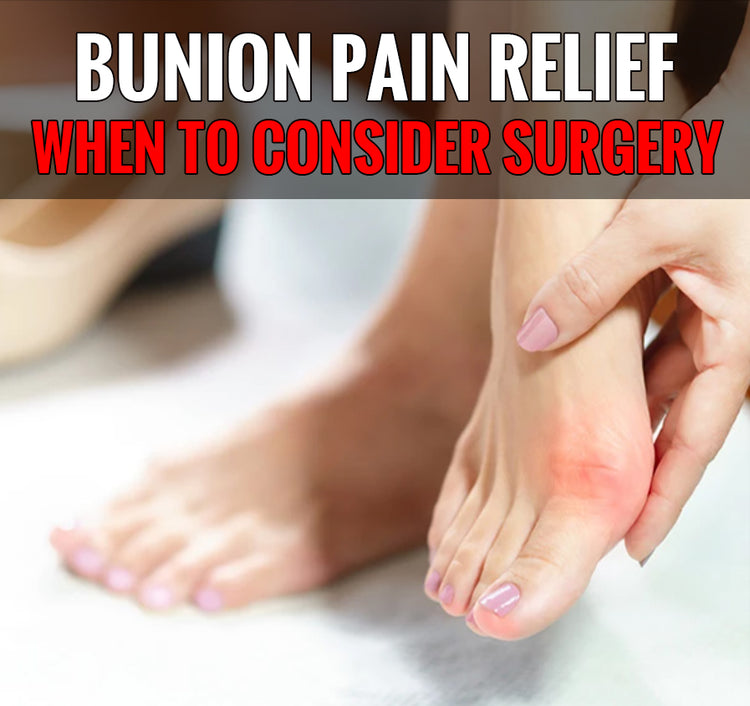How to Get Relief from Bunion Pain & When to Consider Surgery

You've noticed a small bump on the outside of your big toe that seems to be growing larger over time.
Is it a bunion?
A bunion is a bony bump that forms on the joint at the base of your big toe. It occurs when some of the bones in the front part of your foot move out of place. As a result, the tip of your big toe is pulled toward the smaller toes, which leads to the joint at the base of your big toe sticking out. It is possible for the skin over the bunion to be red and sore.

Most people refer to this foot condition as bunions, but the clinical term is hallux valgus. It differs from a tailor's bunion, which forms on the pinky toe and is also called an bunionette.
Symptoms of bunion pain include:
-
An external bump or protrusion on the big toe joint
-
The big toe joint usually hurts while wearing shoes and walking
-
There is swelling or redness around the big toe joint
-
There is a callus formation where the big toe rubs against the next toe
-
A reduction in the mobility of the big toe

How can you get rid of bunion pain?
It can be painful to have bunions on one or both feet. The pain can worsen over time, but you can lessen it by following these five steps:
Choose the right shoes
A shoe with a wide toe box reduces pressure on your big toe and offers plenty of space.
Give it some cushion
By wearing a bunion pad, you can avoid rubbing your big toe against your shoe.
Wear a bunion corrector
The use of a toe brace or bunion corrector can help straighten your big toe and offer pain relief.
Apply ice
Icing your big toe for ten minutes after exercising, walking, or whenever you feel pain may prove beneficial.
Consider taking pain relievers
You can relieve occasional bunion pain with over-the-counter medications such as acetaminophen or ibuprofen. Take them only as directed and make sure they don't interact with any of your other medications.

Are there other bunion treatment options?
Consult your doctor if at-home remedies don't relieve your bunion pain. Other bunion treatments are available for reducing inflammation and relieving pain.
A splint worn at night, for example, or specialized shoe inserts, called orthotics, can help align and support your foot better. Physical therapy can also reduce inflammation and pain, although it can be time-consuming.
It is possible to slow the worsening of bunions with these bunion treatments and home remedies, but it is not possible to prevent bunions altogether.
When nonsurgical bunion treatment options don't work, it might be time to consider bunion surgery, also known as a bunionectomy.

When should you consider bunion surgery?
Initial treatment for bunions involves conservative therapies. However, if the pain persists or has progressed so far as to impair mobility or become very severe, your doctor may recommend surgery.
In general, the goal of bunion surgery is to restore normal positioning and alignment of the big toe joint.
Recovery times for bunion surgery vary depending on your specific issue and the surgical technique used to correct it. However, it usually takes between 6 and 12 weeks, which is why this procedure is reserved for people with severe pain or limited mobility.
Furthermore, even after bunion surgery, it is important to continue to wear conservative footwear - avoid high heels and narrow shoes.
We have a wide selection of health care products to meet your needs. If you have any questions, our customer service representatives are happy to assist you.
